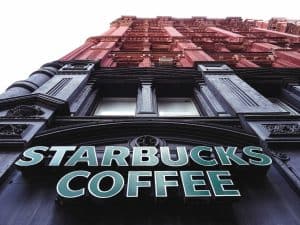
Last year, we got to see an interesting lawsuit against Starbucks, which is now known as the so-called Starbucks Refresher Class Action Lawsuit. But, are you familiar with the details of this case, like what were the allegations and claims, and what went on in the courtroom proceedings? Well, as a Starbucks customer, you should be concerned about that, so, let’s understand this lawsuit from the very beginning. Shall we?
How It All Began?
So, back in August 2022, two die-hard Starbucks lovers, Joan Kominis from New York and Jason McAllister from California, decided enough was enough. They stepped up and slapped a lawsuit on this coffee giant in the New York District Court which we now know as the Starbucks Refresher Class Action Lawsuit. And why, you ask? They were totally pissed by how Starbucks named some of its popular Refresher drinks. We are talking about their popular beverages like Mango Dragonfruit, Strawberry Açaí, and Pineapple Passionfruit. Joan and Jason argued these names painted a picture of real fruits like mango, açaí, and passionfruit dancing in the drinks. Spoiler alert though, there are no real fruits in these drinks.
Allegations and Claims
See, when you order a coffee from Starbucks, you expect to have the real coffee in your drink, not the concentrate of it or just the flavoring, you know? And the same goes for these drinks like Mango Dragonfruit, Strawberry Açaí, and Pineapple Passionfruit. When people order these drinks from Starbucks, they think that they are getting real fruits in their drink, but as you saw, that’s not the case at all. What you get instead is a blend of water, grape juice concentrate, and a good spoonful of sugar. Joan and Jason claimed this crafty naming trick let Starbucks jack up the prices, making folks think they were sipping on some exotic fruit concoction.
Legal Proceedings
When the lawsuit dropped, Starbucks wasn’t about to sit quietly. They tried to toss it, arguing that the names were all about the flavors, not the ingredients list. But Judge John P. Cronan wasn’t buying it. He ruled that it was totally reasonable for customers to expect actual fruit in drinks named after them. He did toss out a couple of the claims, like intentional fraud and unjust enrichment, but the main points of the case got the green light and the proceedings got further.
Though holding their ground, Starbucks maintained that the names were meant to evoke the flavor vibes, not to detail the ingredient list. They simply pointed out that if customers feel curious, they can just outright ask us about the drink. Still, the court thought the fruity names might easily mislead the general public.
What Were Customers Saying About This Starbucks Refresher Class Action Lawsuit?
See, reactions are all over the place. Some customers feel cheated and are all for the lawsuit, while others reckon the names are just playing up the flavors. This lawsuit has thrust the importance of honest labeling and marketing into the limelight. If Starbucks ends up on the losing side, they could be looking at hefty fines and a serious brand image bruise. And yes, it could reshape how products are named and marketed, all in the name of transparency, and that’s ultimately good for the customers.

